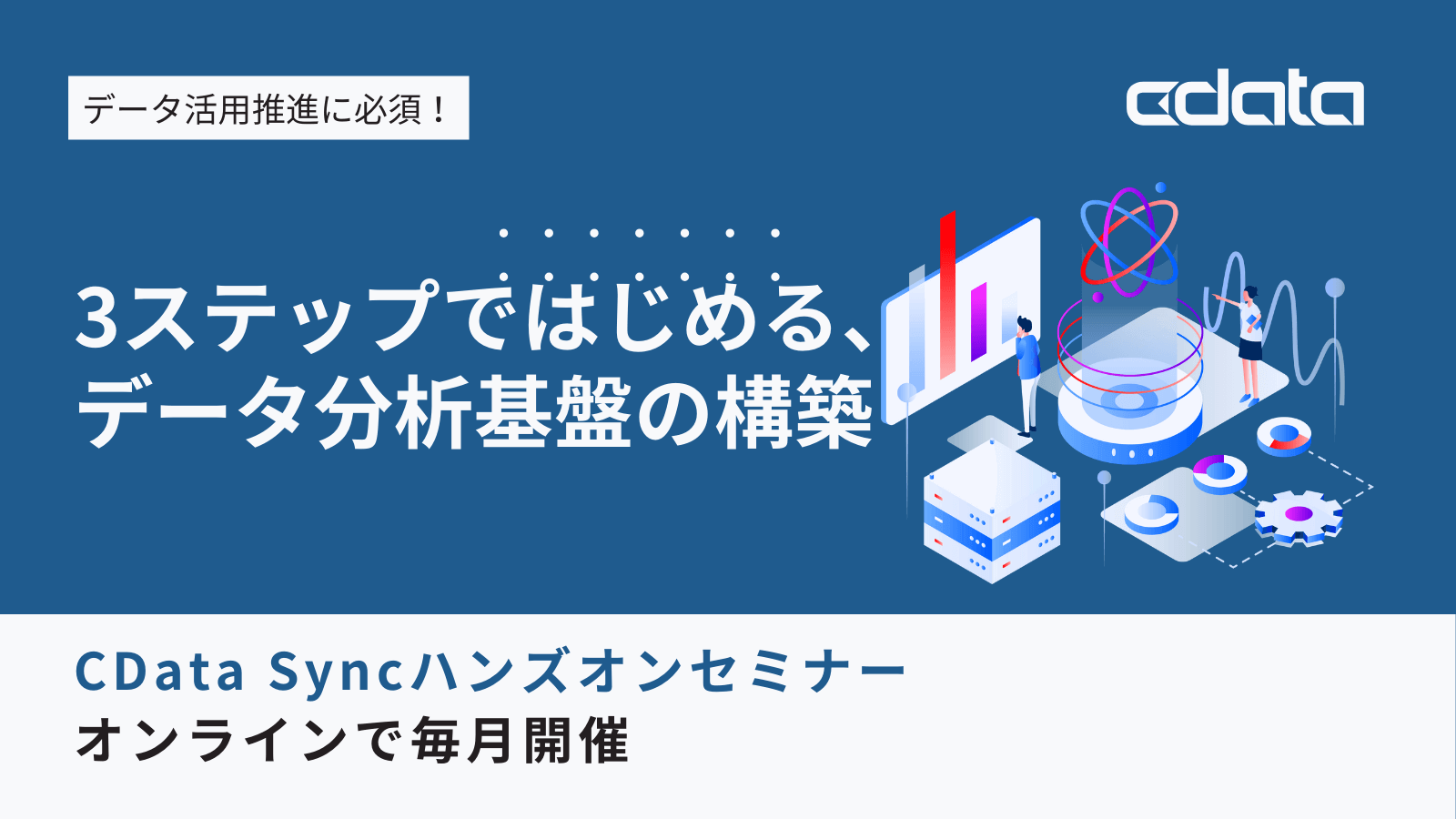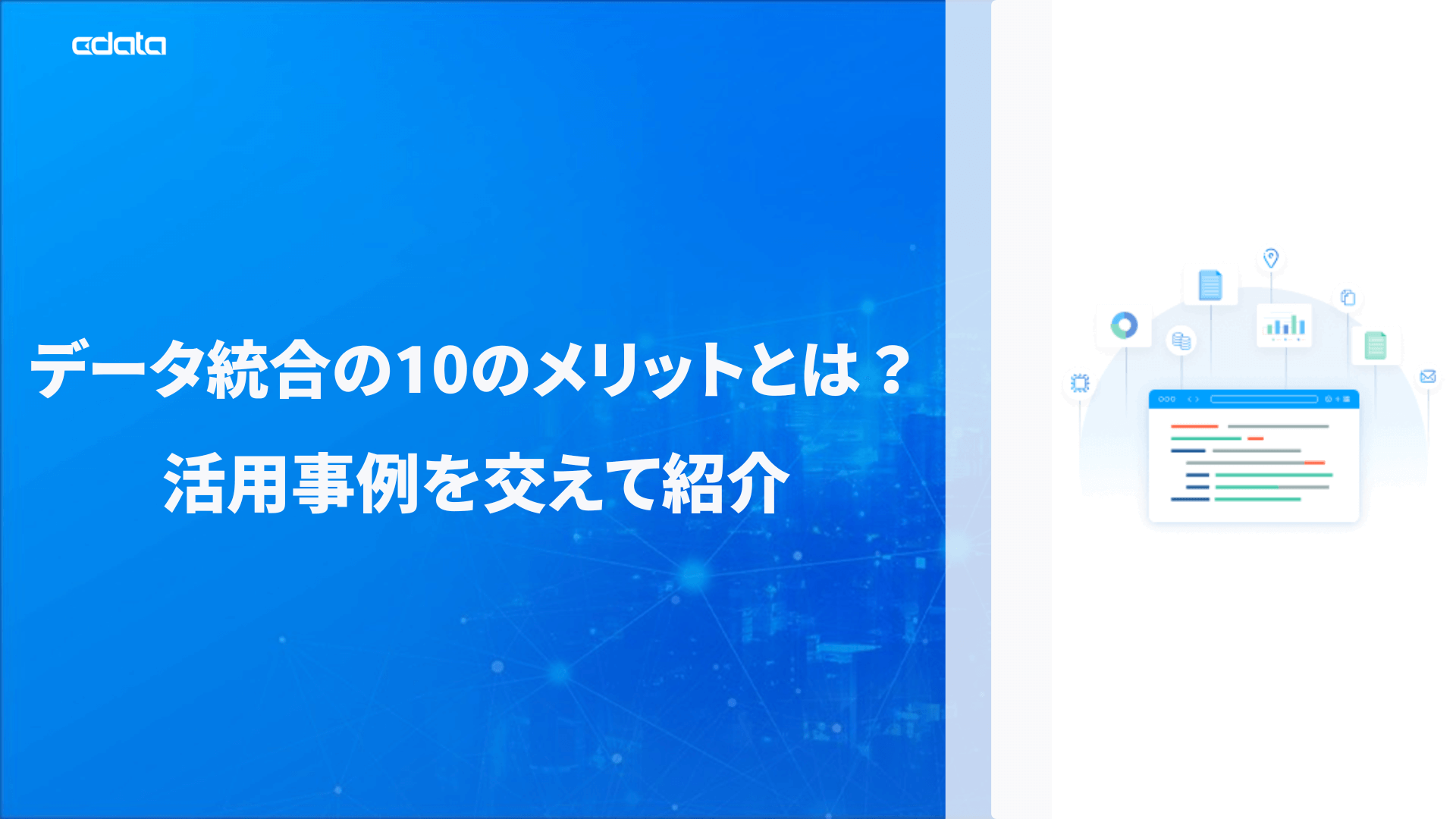ノーコードでクラウド上のデータとの連携を実現。
詳細はこちら →CData Software Japan - ナレッジベース
Latest Articles
- MySQL のデータをノーコードでREST API として公開する方法:CData API Server
- CData Sync AMI をAmazon Web Services(AWS)で起動
- Connect Cloud Guide: Derived Views, Saved Queries, and Custom Reports
- Connect Cloud Guide: SSO (Single Sign-On) and User-Defined Credentials
- Connect Cloud クイックスタート
- Shopify APIのバージョンアップに伴う弊社製品の対応について
Latest KB Entries
- DBAmp: Serial Number Expiration Date Shows 1999 or Expired
- CData Drivers のライセンスについて
- Spring4Shell に関する概要
- Update Required: HubSpot Connectivity
- CData Sync で差分更新を設定
- Apache Log4j2 Overview
ODBC Drivers
- [ article ] Domo Workbench のAirtable からデータセットを作成し、Domo ...
- [ article ] Ruby でCockroachDB データ連携アプリを構築
- [ article ] Visio のシェイプとHCL Domino データを連携
- [ article ] CData Software ODBC Driver を使ってAsprovaをOData と連携
JDBC Drivers
- [ article ] eBay データをBoomi AtomSphere で連携利用する方法:CData JDBC ...
- [ article ] Birst でOffice 365 のビジュアライゼーションを構築
- [ article ] Apache Airflow でSalesforce データに連携したワークフローを作る
- [ article ] ソフトウェア開発ツールMZ Platform でAzure Table データと連携
SSIS Components
- [ article ] SSIS を使ってSAS Data Sets データをSQL Server にインポート
- [ article ] Google Campaign Manager をSSIS 経由でSQL サーバーにバックアップする
- [ article ] Sage 300 をSSIS 経由でSQL サーバーにバックアップする
- [ article ] SSIS を使ってeBay データをSQL Server にインポート
ADO.NET Providers
- [ article ] SSRS レポートサーバーにADO.NET Provider を配置してWorkday 連携
- [ article ] Visual Studio でチャートコントロールと Smartsheet をデータバインド
- [ article ] SSAS でJira データに連携するOLAP Cube を作成
- [ article ] ADO.NET 経由でTIBCO Spotfire でGoogle Campaign Manager ...
Excel Add-Ins
- [ article ] Power View でのAmazon DynamoDB データのインポートとビジュアライズ
- [ article ] Microsoft Power Query からCouchbase データに連携してExcel ...
- [ article ] Excel Online データをPowerShell script でSQL Server ...
- [ article ] StiLL からCData Software ODBC Driver を使ってIBM Cloud ...
API Server
- [ article ] Apache Solr のData Import Handler でOData ...
- [ article ] LINQ to OData データに連携してみた
- [ article ] Microsoft Access へのOData データのETL/ELT ...
- [ article ] SSAS でOData データに連携するOLAP Cube を作成
Data Sync
- [ article ] Databricks データのAzure SQL への自動レプリケーション。
- [ article ] SQLite へのBigCommerce データのETL/ELT ...
- [ article ] OData データをSQL Server に連携して利用する4つの方法を比較
- [ article ] Oracle データベースへのAmazon Marketplace データのETL/ELT ...
Windows PowerShell
- [ article ] Kintone データをPowerShell でMySQL にレプリケーションする方法
- [ article ] Dynamics NAV データをPowerShell でMySQL にレプリケーションする方法
- [ article ] PowerShell を使ってHive データをSQL Server にレプリケーション
- [ article ] PowerShell からBacklog データに接続してデータの更新・挿入・削除を実行する方法
FireDAC Components
- [ article ] Delphi のBigQuery データへのデータバインドコントロール
- [ article ] Delphi のExcel Online データへのデータバインドコントロール
- [ article ] Delphi のSplunk データへのデータバインドコントロール
- [ article ] Delphi のOracle データへのデータバインドコントロール






